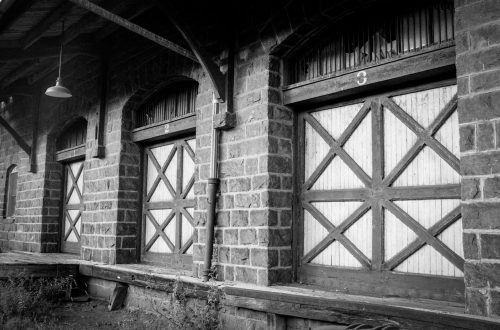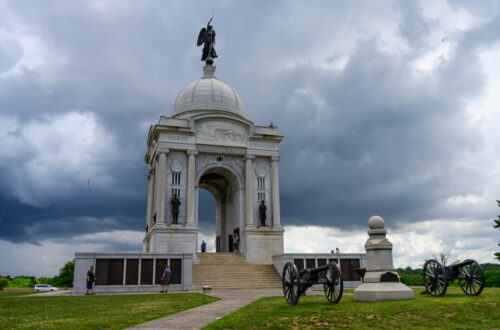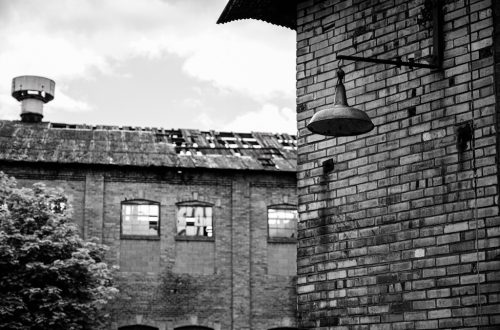Sic Transit Gloria Mundi!
 This weekend we touristed on the Old Allegheny Victorian Christmas House Tour. Jonathan and I do so every year. Here is my previous blog entry on it.
This weekend we touristed on the Old Allegheny Victorian Christmas House Tour. Jonathan and I do so every year. Here is my previous blog entry on it.
Allegheny West, the neighborhood on display, sits directly behind Heinz Field. I could see the Steeler’s home field from streets on the tour. Part of the Rooney family lives in this neighborhood. That’s not why I take the tour every year.
Our first year on the tour, we viewed a home with a beautifully restored parlor and dining room. Then we saw the kitchen. It was a pile of bricks with a stove and refrigerator. The homeowners told us that they spent 20 years in this house and they were just now starting to work on the kitchen.
This is a big reason why I take the tour every year.
I get so frustrated with the amount of work and money that we still have to put into our old house. Something is always broken. Come to find, some of the homeowners in one of the most historic, well-known neighborhoods in Pittsburgh have the same challenges that we do.
You see, Pittsburgh’s well-heeled lived here in the 1800’s. Then most of the mansions became boardinghouses – or just got torn down – in the 1900’s. The neighborhood is still getting back on its feet. Just like Parnassus.
One of the row houses featured on this year’s tour was part of a business enterprise for a member of the Denny family. Ebenezer Denny was the first mayor of Pittsburgh.
Several years ago, we toured a home where part of the O’Hara family once lived. James O’Hara was George Washington’s quartermaster. Part of the Denny family were also descendants of O’Hara.
Mary Schenley’s fortune came from the land that she inherited from her grandfather, James O’Hara.
In 1889, Andrew Carnegie convinced Mrs. Schenley to donate the land that became Schenley Park.
*******
So . . . . here is the the most sterile, antiseptic historical fiction that might have ever been written about Pittsburgh. “The King’s Orchard” by Agnes Sligh Turnbull. A book published in 1963. This is a novel about James O’Hara and his wife Mary and their life in early Pittsburgh. Before and after the Revolutionary War. Back when Fort Pitt still existed. In fact, as Fort Pitt was dismantled, James O’Hara purchased its blockhouse.
In the acknowlegements, the author noted that she consulted the Denny family and their records for part of their research.
This is the book where I learned that Fort Pitt once had a moat.
Here is my prior blog entry about the book.
*******
Here’s what I didn’t mention:
This story takes place during one of Pittsburgh’s most violent eras. Despite this, the book has very little actual bloodshed. I just read a novel about my husband’s Catholic high school alma mater – also on the Allegheny River! – that had more gore and cruelty in it than “The King’s Orchard.”
The author was born in New Alexandria and she is now buried in New Alexandria.
In between these years, she lived in New Jersey for decades and she wrote over a dozen novels. She made the New York Times Best Seller list more than once. She lived into her nineties.
(If you had to choose, would you rather make the Times Best Seller list or live into your nineties?)
This book is out of print.
I bought my copy on Amazon. It is stamped as “WITHDRAWN” from Mechanics’ Institute Library in San Francisco.
One of Saint Vincent College’s librarians told me about this author. He referred to her as “a local girl.” Saint Vincent is less than 10 miles from New Alexandria. One time I made a wrong turn leaving Saint Vincent, got lost, and ended up in New Alexandria.
Back in 1999, Saint Vincent College Library had many of the author’s books, including “The King’s Orchard,” in its stacks. I don’t know if any of these books remain in the library.
The author graduated from Indiana University of Pittsburgh. IUP “used to” have a building named after her. My sister – herself a graduate of IUP – told me that IUP demolished Turnbull Hall and replaced it with a parking lot.
Sic transit gloria mundi!
*******
If you are new to early Pittsburgh history, but want to learn about the key players, I really do suggest this book. Here’s why:
The “real world” has so much darkness. So many awful current events. This book is a pretty light, easy read that doesn’t make you think hard about anything.
The main character, James O’Hara – one of early Pittsburgh’s business and military leaders – comes across as Santa Claus with a knack for business. Always giving.
O’Hara and his wife have one argument and make up about 2 hours later.
Partway through the story, the Seneca chief Guyasuta helps the British Army burn down the settlement of Hannastown in Westmoreland County. Guyasuta later explains that this just sort of happened, and that he was really sorry about the whole thing. Oops!
Simon Girty shows up but doesn’t harm any of the main characters.
O’Hara’s friends talk an angry mob out of burning down his house during the Whiskey Rebellion.
I need fluff like this sometimes.
*****
Here’s the other reason I suggest “The King’s Orchard“:
We live in such a disposable society. So many of our neighborhoods and towns got discarded. Like Allegheny West. And Parnassus. And now people are rediscovering these areas.
Why not also rediscover the hit novels of the past?
Look, I know that this story isn’t actually true. It’s a fairy tale. A fable. There aren’t really any poor people in this whole book. Or really any non-white people. Guyasuta is the only Native American character. And Guyasuta kind of comes off as a buffoon.
Still, it’s interesting to see what people in the past thought about an earlier past. Helps to explain some of their actions, their visions for their own futures.
Also: maybe somebody out there will actually read my blog and then read “The King’s Orchard.” Then say, “Hmm, I can tell this story better.” He or she will craft a tale about about a Seneca, a slave, or an immigrant woman. A character who has no real options in life but to serve the O’Haras or the Dennys. Who has no other option but to help the a founding family own their place in history.
Sic transit gloria mundi!


